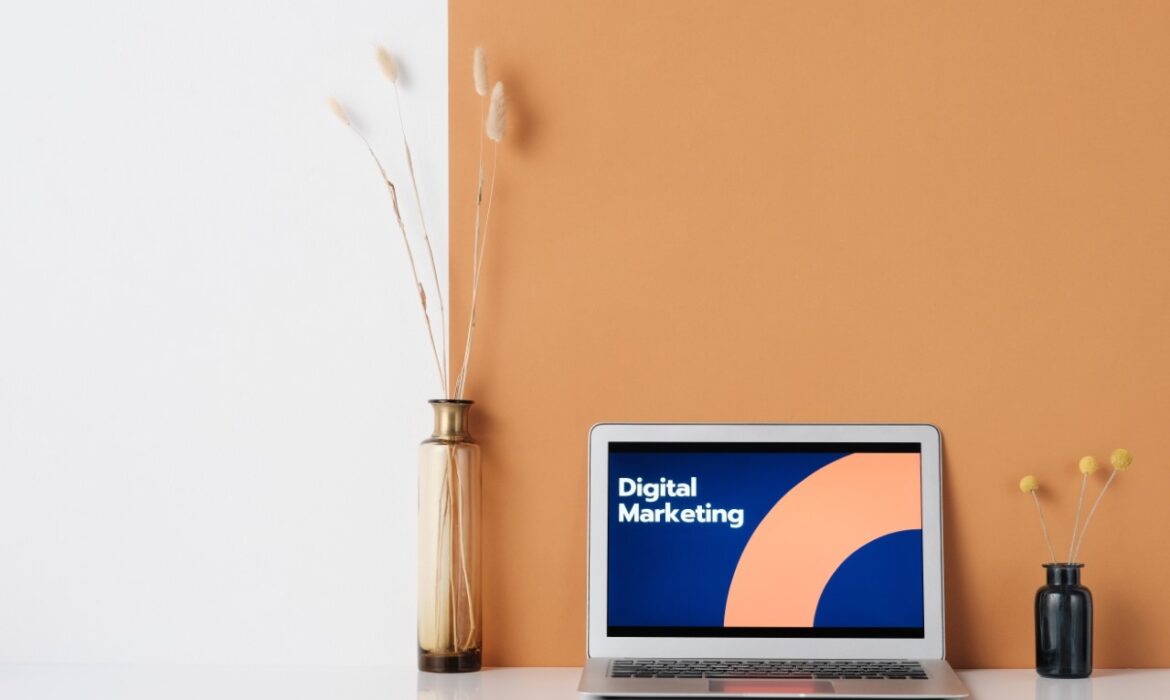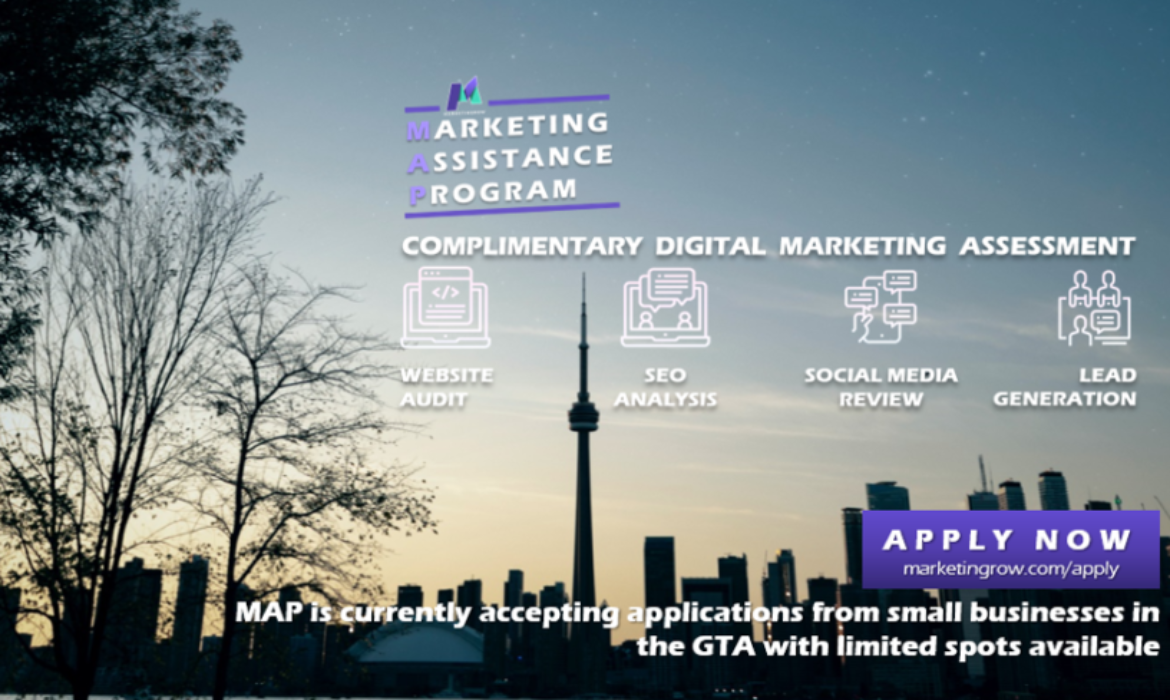5 Powerful Marketing Strategies Small Businesses in the GTA Can’t Ignore
Every single business dream of success that surpasses all expectations. It is only possible when the product or service you offer grabs the audience’s attention. Sometimes small businesses have hard times finding and retaining consumers. The reasons are relatively obvious, such as limited budgets, extensive competition, and focus groups.
One of the simplest ways for a small business owner to attain that objective is to have a well-developed marketing strategy. There are numerous different ways one can promote a small business. You are more inclined to find success by building a marketing strategy that uses tested tactics.
Small businesses often neglect strong marketing strategies while running behind the current trends. But you don’t need to worry about that anymore. We have done that job for you.
Here is a list of the five most powerful marketing strategies for small businesses in the GTA:
1. Make the most out of your virtual events
COVID surely gave unpleasant times to small businesses in GTA. But it also accelerated the evolution of digital platforms. With the increased competition in virtual events, you need a powerful strategy to stimulate engagement and perception of the brand.
The given strategy will indeed turn your virtual event valuable:
- Create an online Event page for your webinars.
- Promote on channels that target your audience
- Have a series of webinars for interested guests to come back.
- Focus on the lighting of your room while attending events.
- Use a virtual background, banner or logo of your brand as a backdrop.
- Choose a right platform for conducting the event
- Send a thanks note to all attendees.
If you wish to take extra tips to be productive while managing the virtual events, we have specially composed a blog on How to Make Most out of Your Virtual Events? Click on the below link to know more: Link attached
2. Generate Leads by Email Marketing
If you wish to be cost-effective and generate leads, email marketing is the best move for you. All you have to do is to send the right message to the right audience. Email marketing is a valuable channel to boost the brand’s awareness.
- Engage: Using a strong subject line with an elegant email design leads to higher engagement rates. You also need to focus on the email layout that can be easily adaptable on mobile. Sending periodic emails to a list of people who are already in the pipeline maximizes engagement.
Tips: You have to acknowledge certain code of ethics in email marketing. Respect CASI rules while sending emails. To know more visit: CASL https://fightspam.gc.ca/eic/site/030.nsf/eng/home
- Aware: Education-based Content provides unique value to our subscribers. You can send little information every month about your small business through newsletters and campaign posts. Sending content rich with insights, tips, and stories helps in building the brand.
- Business Development: You need to send the portfolio or banner of your small business. Ask your audience to act now. The unique brand logo and short and crisp tagline might help you to achieve that. It’s time for a call-to-action approach by you. Your call to action should be short and relatable.
3.Educate your Audience with Content
Content is considered as a blessing in marketing. Content marketing allows you to gain visibility even in crowded places.
To stand out create:
- Informative blogs with prominent keywords
- Innovative Videos with a message s
- Interactive social media posts with relevant captions.
4.Explore Instagram Marketing
Instagram is one of the best social media platforms to increase your digital footprints.Use advanced features like Instagram stories and live videos to interact with your followers. Keep yourself updated with the trends and what other marketers are doing. You can use relevant hashtags to maximise the reach of your content. Also, you can reach out to potential GTA based influencers to promote your brand.
Instagram algorithms are more likely to increase the engagement of a page. The main purpose of successfully using Instagram marketing is to position yourself as part of the online community.
5.Consult with a Local Marketing agency
Look out for a GTA-based firm that will give you individual assistance. These firms would know the industry culture thoroughly and help you out in building networks. A local marketing agency will use specific strategies to engage potential customers related to the community with a limited budget. They will solve challenges because they have been through this with other clients. In most cases, they already have some local solutions like:
- Perfect time to start a campaign
- Use local lingos for promotions
- Popular spots for showcasing your brand
- Localize your business with local SEO
Conclusion
Marketing strategies deliver a detailed framework to reach out to the exact target audience. Bolstering the brand image is only possible with a smart skill set in marketing. If your business needs a strong marketing plan and execution at a modest rate, MarketinGROW is right here to assist you with a promising solution. Book a consultant to know more – https://www.marketingrow.com/
Make the Most Out of Your Virtual Events!
COVID brought a whole bouquet of challenges for businesses worldwide; small businesses in the GTA are not immune to it. These challenges have forced businesses to rethink, adapt, and evolve the way we operate. The rise of Work-From-Home culture, virtual events, and ramped up digitization are a few such examples. The practice of holding events virtually isn’t new, however, the practice has gone mainstream in the small business community in recent times. With the accelerated adaption, laying the foundation of best practices surrounding hosting and attending virtual events must be addressed.
The given strategy will indeed turn your virtual event valuable:
- Create an online Event page for your webinars:
You must create an event named page/profile on the social media sites.
- 🠚 LinkedIn event pages are crucial for awareness and engagement. The features encourage the audience to sign up or register for the event. With the help of the page, you can invite all of your connections, start a discussion, and manage your attendees. Your connection can also share the event with people outside of your network which assists in boosting your visibility and organic reach. Your connection can attend the event directly with Just one click or you may ask them to fill out a form to save their data. Even the interested attendees can add this event to their calendar directly by clicking on the page's feature.
- 🠚 Facebook Event pages easily connected with Facebook Live which allows you to promote your live stream on an event page. When you create a new event page, it appears in the timeline of your page's followers. Attendees can attend one events tab on Facebook and share it with friends. One can easily connect the event to their smartphone by the events calendar feature.
- To increase visibility, keep creating posts for both LinkedIn and Facebook event pages with all small or big announcements. This helps in generating excitement and lets the audience see what they can look forward to.
- One can also be updated with the latest events with the help of websites like Eventbrite. It has features like online ticketing and getting a personalized experience. Eventbrite is a portal where people post about online or offline events. It allows people to come and look over the information about events organised in their localities. Organisers can post these events for free or paid.
- Promote on channels that target your audience
Market your event on the right channel. Let’s say you are hosting an event for a clothing brand; will you promote it on LinkedIn? Of course not, we all know that LinkedIn is a professional platform. So, segmenting your audience’s media preference will be effective for your event. It will allow you to decide on the right channel to send your event-related message.
- Have a series of webinars for interested guests to come back
Host periodic sequences of the webinars with the same main topics. A series breaks down one main topic into its segments or connected concepts with a chain of webinars. Also, having the same host can bring consistency to the audience. Host a series where you have multiple episodes with new presenters. Remind the audience by describing the next episode in detail at the end of each session.
- Focus on the lighting of your room while attending events
Lack of proper lighting is a very common mistake noticed in online events. To have a productive event, focus on being engaging. You can’t connect with your audiences with dull lighting. You can use multiple sources of lighting while hosting. Watch your lighting position, too much lighting can wash out your face. Don’t forget to test it before going live.
Also, you can get equipment like ring lights to equalize the reasonable light. If you wish to put light evenly over the subject, use artificial lights. It highlights your face rather than the background. The balanced lighting can instantly enhance your video calls, meetings and virtual events.
Grab your hands on these super affordable lighting solutions for brightening up your virtual events:
- Use a creative background as a backdrop
While you are conducting an event, would you want the audience to notice your surroundings rather than what you are saying? You can use the banner of the event or the logo of your brand as a backdrop. It will eventually place your brand image in the audience’s mind. You can also use the blur tool to focus on yourself. Adding these backdrops not only makes you look professional but also acts as a branding tool.
Also, you can also use some of the terrific office backgrounds available at online stores. It will allow you to always be ready for video calls with these perfect backdrops.
Whether you want a classic office background or a bit modern touch, here are the best options for your virtual event background:
Use these products to renovate your work from home space and give a proper professional feel while hosting virtual events.
- Choose the right platform for conducting the event
Look up the myriad of features while selecting the desired platform for your event. Choose a platform that allows you directly to broadcast your event on different social channels. With the help of this, you can easily stream your videos to other platforms like Facebook, Instagram, YouTube and LinkedIn. Make sure the platform has the option of raising hands. Features allow the audience to appreciate what you are saying by just raising hands and clicking thumbs up icons. There are different platforms available out there with similar features, some of those are Microsoft Teams, Google Meet, Zoom, etc.
- Send a thanks note to all attendees.
Don’t forget to send a follow-up email within 24 hours of the event. Thank all of your event’s attendees with a friendly tone. Thanks to them for attending the webinars and providing the resource with information. Use a catchy subject line with an event feedback email. You must attach a link to the virtual events to add more value to them.
In a nutshell, there are quite a few tips we have covered above. Hopefully, these tips and tricks will help you make meaningful connections in the virtual event. With all the information, we hope you are more than prepared to gain productivity while working on the Webinars. If you are looking for consultancy in Virtual Events marketing, Book a consultancy with MarketinGROW now!
Digital Marketing Trends in 2022
- Cryptocurrency integration is growing exponentially – Quite a few businesses have started accepting currencies such as Bitcoin as a mode of payment. There are quite a few advantages of integrating cryptocurrencies as a mode of payment. Cryptocurrency transactions are far more secure as compared to credit and debit card transactions. However, cryptocurrency integration also comes with its range of challenges. A cryptocurrency is irreversible and has its own tax implications. Regardless, the crypto market has seen an exponential surge and is expected to continue to grow in similar fashion.
- B2B influencer marketing is on the rise!– Several tech giants such as Adobe have jumped into the trend of using influencer marketing in the B2B space. As per Business Insider Intelligence, Influencer marketing is expected to see a whopping global spending of around $15 billion in the year 2022. It is highly recommended that businesses try to collaborate with influencers in their space to unlock the seemingly enormous potential that B2B influencer marketing has to offer.
- LinkedIn continues to serve as a gold mine in the B2B space– LinkedIn is undoubtedly one of the most famous social media platforms in the world. Unsurprisingly, LinkedIn is the most widely used social media platform among Fortune 500 companies. If utilized to its fullest potential, LinkedIn can generate plenty of business opportunities for your brand.
- Customers are increasingly concerned about data privacy– Marketers have to establish a strong relationship with their customers, especially when customer data is involved. It is understood that customer data is required in order to run ads seamlessly and provide useful information. However, that is irrelevant for the customer. At the end of the day, the customer is still left wondering how his/her personal data could be misused. This is where marketers need to be extra cautious. A more smart approach would be to be completely honest to customers regarding data usage.
- Avoid being the “jack of all trades”– In today’s marketing world, several online businesses have established a very ‘thin’ presence on their social media channels. Smart Digital marketers, on the other hand, focus on a single channel, meticulously planning on how to dominate in that specific channel. It is highly advisable that marketers today focus on quality rather than quantity
- Establish an unparalleled user experience– No matter how many SEO ‘tricks and tips’ you know, unless you are not able to provide users with a seamless user experience, you are bound to see a high bounce rate on your website’s landing page. Instead of only focusing on making your website “SEO friendly”, spend more time on understanding your buyer persona and create an appropriate user experience.
- Facebook is here to stay experience– Facebook has been disregarded by several online businesses in recent times owing to the growing interest in Instagram, Snapchat and Tiktok. Regardless, Facebook is still one of the largest social media platforms for Online Sales and Advertising. Furthermore, Zuckerberg recently announced the introduction of Meta, a totally unique concept which will use Virtual reality to help people connect with each other. Hence, it is recommended that marketers not bet against Facebook!
REBRANDING 101
Wondering how to and when to upgrade your brand to attract new customers, or stay in sync with the existing ones? MarketinGrow, brings you a blog that will help you decide how and when to upgrade or change your brand approach. Let’s start!!
What do Netflix, Amazon and Apple have in common? They’ve evolved with changing times. Change is a common part of any business cycle, irrespective of whether you are a small large business. And some hard times such as the current virus pandemic and also bring with it a good business opportunity.
Most small businesses and entrepreneurs start off as an idea and idea that converts to profit. But to make it sustainable and succeed in today’s economy if your brand can’t share the same values as your audience it’s non-existent to them. Given that you face competition not only local but global and your customers are often lured either directly or indirectly through different means, making it your responsibility to make your brand stand out.
And that’s exactly why a business reinvents itself. This doesn’t mean the core values of the business or the brand have to change but just changing how you offer the product can be a good enough strategy for a small business.
According to Shawn DuBravac, a Small Business expert and author of “Digital Destiny” DuBravac says, “it’s important for a small business to constantly innovate and re-innovate the organization, from what they offer, the value it provides to how they treat their employees” especially if you are an e-commerce or technology-based firm that fear larger corporates overshadowing your product innovation and re-innovating what you offer keeps your customer profile growing.
When should a business rebrand itself?
Typically, a firm would be advised to rebrand or renovate every 5 years to stay in sync with their customers. But there are other scenarios that may be a no brainier such as image crisis or financial crisis.
But one time a small business can re-innovate their existing product or services is when there is a global slow down. This is the time most small businesses take a hit but a smart brand would know how to be a winner in such situations by providing value and need.
How do you reinvent for a small business?
If you choose to reinvent and rebrand it’s a crucial step. In requires a strategy, goal and finances and most importantly time to support a successful rebranding. We will give you a step by step approach to doing this below:
- Know when to change – for a small business timing is everything. Change or reinventing doesn’t have to be just because we told you so, but also based on calculated facts. Like your personal finances such as paying for your children’s college tuition or a new mortgage. Things don’t come easy and rebranding halfway is never a good idea. Make the changes subtle and scale up accordingly to what you think you can handle or hire an agency that understands your market and its demographics to help you with it while staying on a budget.
- Know your customers – both existing and the target audience. Knowing how to get your existing customers to accept a new image of your business is half the war won. Since we want to grow the business you have to take into account the existing customers and survey their needs and wants and strategies ways with your marketing team for an approach that will be accepted by the existing customers. While it also is able to lure potential customers in.
- Make use of technology – An easy way most firms are able to evolve their brand image is to do this is via social media talk to your audience see what they like and what can be incorporated in your brand image and voice keep evolving with technology and use it to benefit your brands such as videos ads or AI. This doesn’t have a direct impact on the customers but subtle enough to encourage new audiences and traffic to convert into loyal customers.
- Make the transition smooth: evolution did not take place overnight nor does your brand growth. Constant evolving and renovation are the laws of nature too and is most easily accepted rather than an overnight change in the brand itself. This will also help you handle the transition in a much-organized manner on a personal level instead of feeling overwhelmed.
- Stick to the plan – often even when customers seem to take the new brand image quite well it’s the owners, we notice finding it hard to let go of old habits or approaches. Given that some companies have been doing business a certain way for a number of years change can be hard. As owners feel they are letting go of a part of themselves and often tend to switch gears, this is directly counterproductive to all the effort you have put in so far and leaves your customers employees and partners confused as to what you are planning which is never a good sign for a brand image.
Easy ways to reinvent your brand
Change your voice – instead of selling your product sell its value, people will remember stories, not the slogans. What customers look for online be it through SEO or social media is for products similar to their likeness. If your product matches what they are looking for you have a sale. Send a message that resonates with the target audience, make your new voice acceptable and engaging with its viewers.
Change the medium – businesses are never constant, imagine you are a café owner your menu would have to incorporate those items that your customers are most likely to buy or include take-away options. Similarly, while reinventing your brand if you often opted for traditional advertising opt for new mediums such as social media, email and blogs that are more engaging and get a lot of traction required for a business to keep growing.
Incorporate technology – the biggest gift 21st century has to offer is the constant evolution of technology, for a small business in Brampton or Mississauga this may seem like uncharted waters but with the right team and approach incorporating AI as chatbots or analytics, studying your customers and what’s engaging them the most can be life-changing. Technology and level the playing field for all businesses big or small. So, use it in the best possible way that can benefit your business.
Hire a digital marketing agent or agency– most of our clients are those who have been in the industry for close to a decade or more looking for a wider visibility and access to their clients. Being in the field of marketing made us understand how a marketing agency is able to access, define and strategies your business plan in order to make a smooth transition with the least amount of stress or confusion.
Start with simple transitions – rebranding doesn’t have to be hardcore, simple subtle changes can make a lot of difference when we speak of a small business. From changing your website look and feel, creating an app to a simple logo and graphic changes can help customers engage with your brand much better than a complicated or out of date approach. Start simple keep it subtle to see how customers react and scale up gradually.
How much does rebranding cost a business?
On average, rebranding would cost 10-20% of your marketing budget. In Canada, rebranding can cost a small business anywhere between $1000- $20,000. The numbers may and will differ depending on what your idea of rebranding is? Is it just a simple website change or adding technology and social media to the mix or changing the logo? Starting off may sound risky and scary since you have put in so much effort creating your business but with the right marketing team and approach this risk would very well translate into a good business investment that translates into bigger more visible profits for your business.
Want to know how to start the evolution of your brand? We have it all covered for your contact or book a consultation with MarketinGrow to know-how.
MARKETING ASSISTANCE PROGRAM (MAP)
In light of the recent events we want to ensure our community and its small businesses in Brampton, Mississauga and surrounding GTA are still able to function at their level best. COVID-19 has caused businesses to rethink and strategize their current marketing strategy. MarketinGROW offers its support by launching a limited time Marketing Assessment Program aka MAP. MAP is a complimentary service by MarketinGROW that has been designed to provide small businesses with much-needed momentum when it comes to optimization and analysis of their current business plan and marketing efforts.
This includes:
1. Website Audit 2. Search Engine Optimization (SEO) analysis 3. Social Media Marketing Analysis 4. Lead Generation Strategy
Book your free slot today. Let’s come out of this lock-down stronger and more efficient than ever!
COMPLIMENTARY ASSESSMENT FORM
Fill the form & we will get back within 24 hrs









